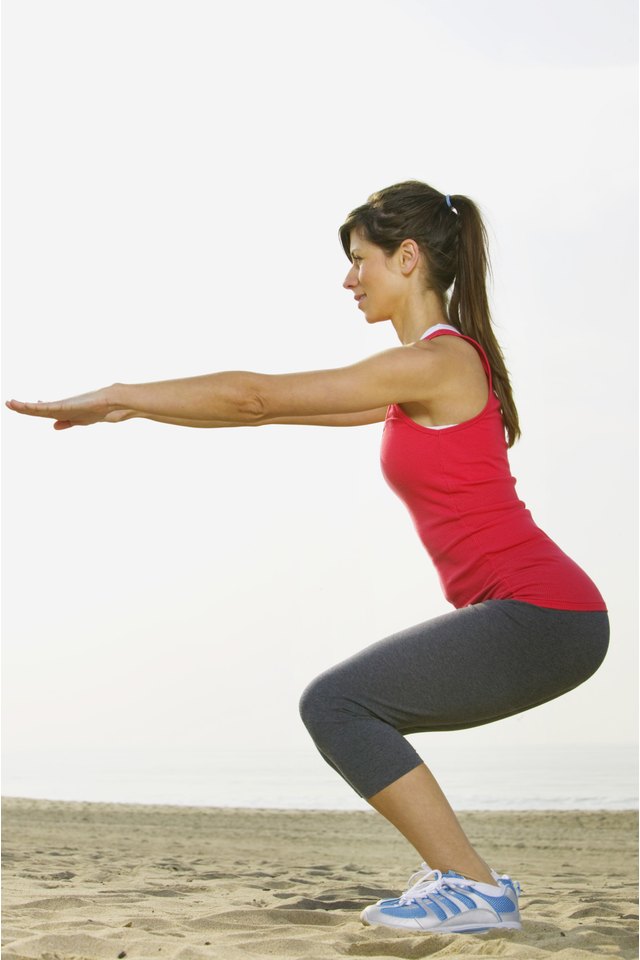Air Squat vs. Squat

The squat serves as both a strength-training exercise and a functional movement that mimics real-world activities. The air squat uses only body weight for resistance and is more functional than the standard squat, which typically incorporates external resistance, such as a loaded bar or dumbbells. Use the air squat to learn proper squatting technique and advance to the standard squat as you become stronger.
Technique
The air squat and the standard squat are performed with the same basic exercise technique. Stand upright with your feet about hip-width apart. Keep your chest up, your shoulders back and your neck in nuetral alignment with your spine. Initiate the downward movement by pushing your hips back, transferring your weight to your heels. Continue lowering your body until your thighs are about parallel to the floor. Pause for a count before pressing through your heels, extending your knees and hips and returning to a standing position.
Purpose
The air squat is the most basic version of the squat and is an appropriate movement for beginners and individuals learning proper squatting form. The air squat does not provide enough resistance for advanced lifters, who add external resistance and perform a standard squat to strengthen the muscles of the legs, hips, butt and core. Some workout programs incorporate a fast-paced air squat as an aerobic exercise to work the cardiorespiratory system.
Proper Form
During the air squat, lift your arms to the front to counterbalance your body. As you lower into the squat, keep a natural arch in the lower back; do not round out the back or shoulders. For the standard squat, hold the barbell on your traps -- across your upper back -- not on your neck. You can also hold dumbbells by your sides or in front of your shoulders. Although pushing your hips back may feel counterintuitive and unbalanced, it protects your knee joints, keeping the tension on the thigh muscles. Pushing your knees forward past your toes places excessive pressure on the knee joints.
Workout Routine
Make sure you can complete 15 to 25 repetitions of the air squat with good form before you add external resistance and advance to the standard squat. Complete eight to 12 repetition for two to three sets of the standard squat. The air squat and standard squat are the most fundamental squat exercises. After perfecting proper squat form, change up your leg routine by incorporating other squat movements, such as the front squat, hack squat, one-legged squat, the pistol squat and the split squat.
References
Writer Bio
Based in Austin, Texas, Jolie Johnson has been in the fitness industry for over 12 years and has been writing fitness-related articles since 2008 for various websites. She received her Bachelor of Arts in English and philosophy from the University of Illinois.
